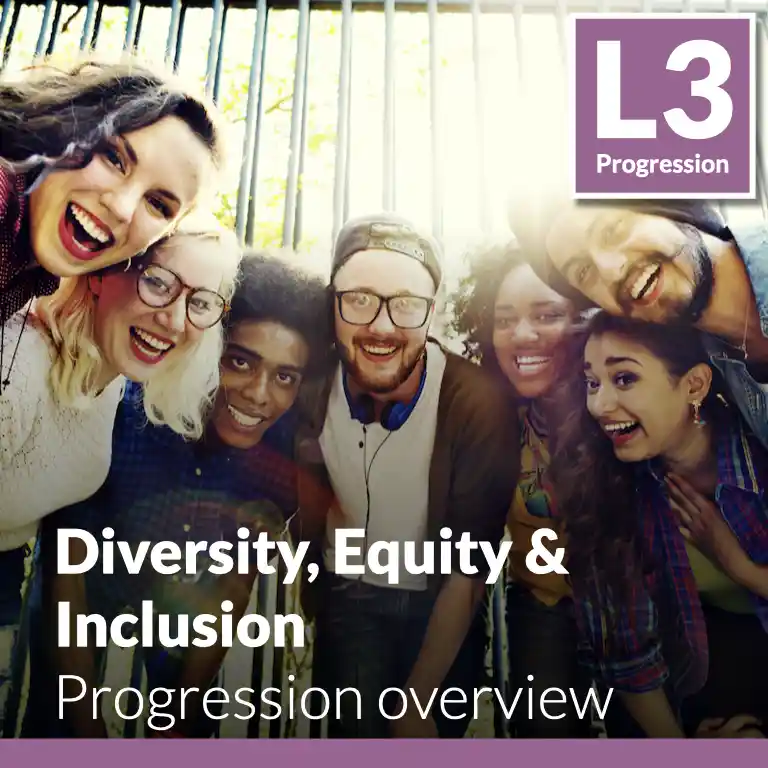Enjoy instant access to a scalable system of proven practices and execution-ready tools. Built to launch strategic HR programs 5X faster!
✓ Enjoy platform access
✓ Create your HR roadmap
✓ View open content in library
✓ Access dozens of practices:
⤷ The HR Strategy program
⤷ Explainers and deep dives
⤷ Supplemental guides
⤷ Insight articles
⤷ Weekly best practices
⤷ And more!
100% Free. No credit card required.
This guide is part of a progression set comprised of Core, Advanced, and Emerging Diversity, Equity & Inclusion Practices.
Diversity, Equity, & Inclusion (DEI) strategies are only successful if an organization can both 1) attract a diverse talent pool and 2) retain a diverse workforce. Retention can be the more difficult challenge because there is no single activity or set of activities that can completely prevent attrition. However, we do know that employees (of all backgrounds) are more likely to leave a work environment where they feel excluded, unsupported, and undervalued. Without an equitable and inclusive culture, organizations are unable to reap the cultural, financial, and performance-related benefits that come from having a diverse workforce. This guide focuses on three key practices that foster an inclusive culture. However, creating an inclusive culture means embedding DEI into the fiber of every HR function and business process, culminating in an employee experience that is wholly welcoming.
Practices at this level drive deep employee involvement with DEI initiatives and practices through the strategic use of goals and associated incentives that both maintain a focus on meeting enterprise objectives and reward success in the management of a welcoming and inclusive environment that results in a more representative workforce. This includes creating appropriate goals, measures, and short- and long-term incentives for executives and employees. They introduce technology to support developing and managing a diverse workforce and equitable and inclusive practices. Such technologies can enhance the bias-free nature of external candidate screening and existing employee assessment for transfers, promotions, and professional or career development opportunities. The practices at this level also include the alignment of DEI with broader corporate social responsibility strategies and practices in a manner that integrates externally facing initiatives with internal advancement and mobility opportunities. Creating a linkage between internal and external programming allows HR to take a seat at board-level discussions related to supplier diversity and community relations that can support the company’s efforts related to corporate citizenship, which is so attractive to candidates and partner organizations alike.
It is not enough for organizations to hire from diverse talent pools. To unlock the full power of DEI, they must go further and cultivate work cultures that foster the retention and growth of a diverse workforce. According to Glass Door, 67% of job seekers say diversity is an important factor when considering a company. However, many organizations are struggling with high attrition amongst women, people of color, and other traditionally underrepresented groups. For example, a Bain and Company report found that Black workers who feel excluded are four times (4X) more likely to leave a job than their white counterparts. Organizations are at risk of perpetuating a vicious cycle – employers who cannot retain diverse talent groups cannot attract job candidates who value DEI.
In light of those facts, the idea of creating goals and compensating people for their contributions to the achievement of such goals is based not only on reinforcement strategies but, more importantly, on the communication that the organization is serious enough about the topic that it will set aside financial resources to support it. The “optics” of such practices send a strong message to employees with diverse backgrounds that the organization is committed to creating a culture and environment that is not only welcoming but well-managed on that front. Similarly, the investment in intelligent technologies that reduce bias and focus on equal access to professional development, especially with programming that engages employees with mentors and career path guidance, tells all employees that they have opportunities to grow and flourish independent of their background and traits. A well-orchestrated set of corporate social responsibility practices (that are widely and openly communicated) tells employees and future applicants alike that there is more to the organization’s commitment than just words. It is an added resource for diverse talent through connections to minority suppliers and governmental, industry, and community agencies. Particularly when linking those external groups to employee resource groups (ERG), a clear statement of that commitment can exist and live through word-of-mouth among the diverse employee base.
Adopting the practices at this level creates a strong statement to the entire DEI ecosystem of an organization, with leaders, employees, infrastructure, and external partners all aligned and getting the same message about how seriously the enterprise is committed to the concept. With leadership owning the strategies and outcomes, incentives reinforcing the expected behaviors, practices, and outcomes, a technology infrastructure driving greater objectivity and equity, and external partners being engaged in the pursuit of a broader impact on the company and its community, the full benefits can come to the organization.
Establishing and determining distribution of financial incentives for both leadership and inputs into the DEI work efforts.
Identifying and leveraging the technology solutions that help reimagine DEI practices and processes at the organizational level.
Integrating DEI strategies into broader business strategies and relationships.

Enjoy instant access to a scalable system of proven practices and execution-ready tools. Built to launch strategic HR programs 5X faster!